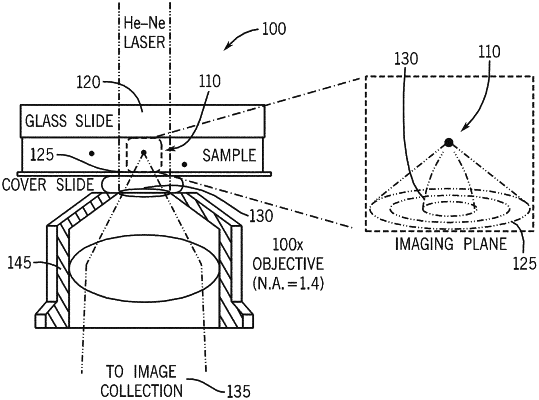| CPC G01N 15/1475 (2013.01) [G01N 15/1429 (2013.01); G01N 15/1434 (2013.01); G01N 15/1459 (2013.01); G02B 21/008 (2013.01); G02B 21/0056 (2013.01); G02B 21/0068 (2013.01); G03H 1/0005 (2013.01); G01N 15/1484 (2013.01); G01N 2015/003 (2013.01); G01N 2015/0065 (2013.01); G01N 2015/1445 (2013.01); G01N 2015/1454 (2013.01); G01N 2015/1493 (2013.01); G01N 2015/1497 (2013.01); G03H 2001/005 (2013.01)] | 19 Claims |

|
1. A method of characterizing a parameter of a sample by holographic microscopy, comprising the steps of:
receiving holographic image data of the sample from a storage medium;
determining a first estimate of the number of objects in the holographic image data, each object associated with a set of concentric bright and dark rings;
determining, for each set of concentric bright and dark rings, by a voting algorithm, a centroid defined by an approximate x, y position in a plane, with each pixel of the image data voting for pixels in a transformed image that may be centroids;
determining an estimate of the axial position (z) of each of the objects;
determining by Lorenz-Mie analysis an estimate of each of the objects' radius and refractive index;
using holographic image data from the sample to characterize properties of the sample and generate information characteristic of the parameters of the sample; and
comparing the estimate of each object's radius with control holographic image data corresponding to a known radius of a control object.
|